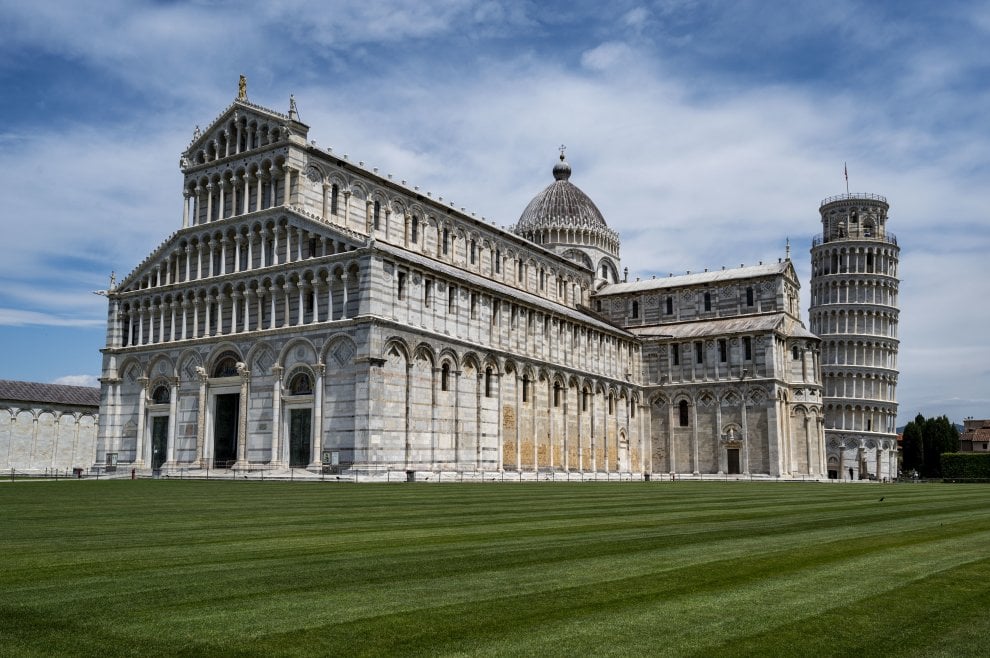
Millions of tourists travel from all around the world to capture a photo with the renowned Leaning Tower of Pisa, in Piazza dei Miracoli. The Torre Pendente – or the Leaning Tower of Pisa – is one of Italy’s iconic national attractions, known world-wide for its gravity-defying tilt.
Under surveillance for 850 years, the most recent ‘check up’ revealed that the Tower is leaning less, confirmed by experts of the Opera Primaziale Pisana, an organization responsible for landmarks in and around the Piazza dei Miracoli. After extensive restoration efforts, the daunting question has been answered: the Leaning Tower of Pisa is no longer in danger of collapse. Most unprecedented, the structure is seemingly in a process of precariously straightening itself.
Twenty-three years ago, an excavation operation triggered the slow decrease in the building’s inclination. And to this date, the tilt of the tower has been reduced by 43 centimeters. Seemingly, the result of an engineering miracle.
“Its appearance does not change, but safety does” explained Roberto Cela, the technical director of the Opera della Primaziale in Pisa. Tourists will still be able to capture their Instagram-worthy photos supporting the “Leaning” Tower with one hand. Movement, however, below the monument continues – and it is unknown whether it will stop, and when.
The Tower’s Tumultuous Past
This freestanding tower has had a turbulent past. When construction began in 1173, by the architect Bonanno Pisano, the foundations were built on loose sand and clay (an alluvial plain). The land could clearly not support the structure’s weight – causing the onset of the infamous (nearly four-degree) tilt.
In 1838, the tower sank. An architect, Alessandro Gherardesca, was commissioned to create a ‘basin’, by removing land around the tower. However this tested its structural integrity and stability, causing the sudden acceleration of the now dangerously ‘leaning’ tower. By the end of the 20th century, the monument’s inclination drastically increased, which escalated fears that the tower would eventually collapse. For instance, in 1995, in a period labeled “Black September,” the tower tilted exceedingly overnight, as much as it did in an entire year. From 1990 to 2001 the Leaning Tower was closed to the public for consolidation.
The tendency to lean dangerously prompted further restoration efforts. From 2001 onwards, engineers began to stabilize the leaning tower, attempting to defy gravity and physically pull the tower back up. Using counterweight, steel cables and reinforcing concrete pillars in the foundation, efforts were eventually successful.
Monitoring and Conservation efforts today
The Leaning Tower is considered to be the “most controlled monument in the world,” said Cela. Since 1927, the tower has been subjected to careful measurements – which have gained sophistication over the years. To this day, the tower remains at special observation, with a modern, satellite tracking system used to analyze environmental factors that influence the movements of the tower.
At the intersection of technology and culture, it is the “extraordinary plan for the monitoring and conservation of immovable cultural heritage, ” said Cela. This new, highly advanced control system is taking shape on the roofline of Pisa. Telescopes equipped with sensors have been mounted on both the tower and surrounding architecture: the cathedral, the city walls, the old Santa Chiara hospital and the Opera museum. This will work hand-in-hand with corner reflectors (a type of antenna), which will soon be applied to refine the measurements of the satellites. The collected data will be processed by a startup at La Sapienza University (Rome) and the Eurotec company in Pisa.
The tower will celebrate its 850th anniversary in the upcoming year on August 9, 2023: a date that marks when the cornerstone of the foundation was laid into Pisan soil. And as discussed in a recent conference dedicated to the state of health of the bell tower, this milestone will be celebrated with exhibitions, concerts and other initiatives with schools, universities and literary competitions the following year. (Emma Van Zuthem)








